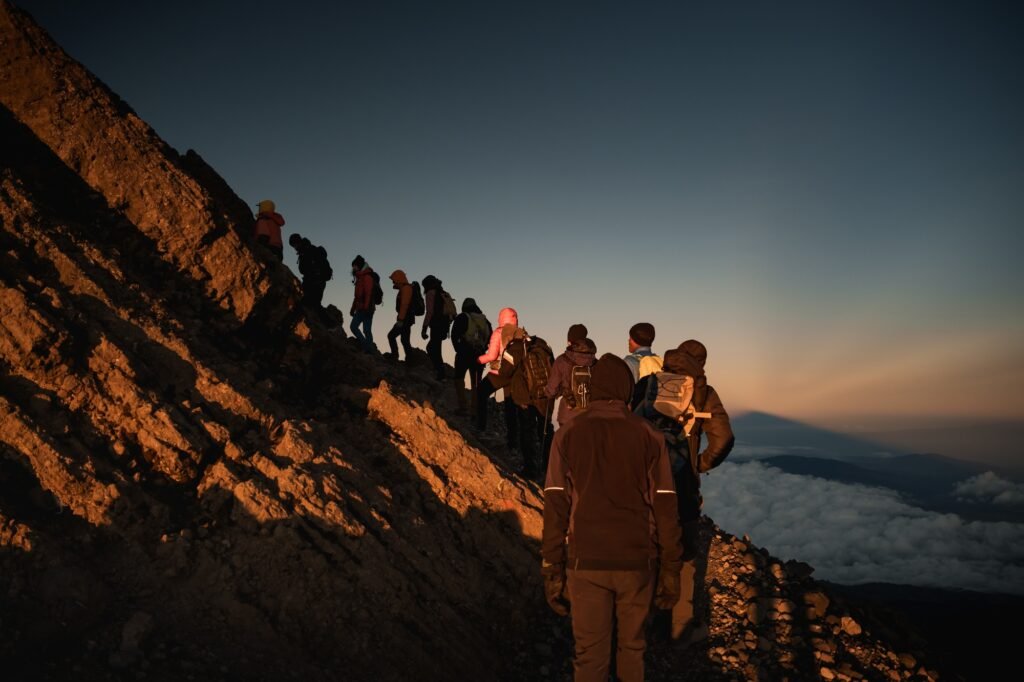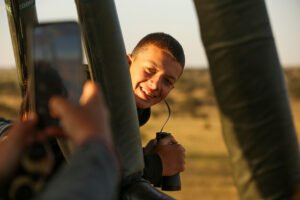Tanzania’s second-highest mountain, standing at 4,566 meters. Located in Arusha National Park, it offers a scenic and less-crowded trekking experience with rich wildlife, lush forests, and stunning views of Mount Kilimanjaro.

Located in the heart of Arusha National Park, Mount Meru is Tanzania’s second tallest mountain and the fourth highest in Africa. Standing at 4,566 metres, it is often used as a warm-up for Kilimanjaro, but we believe this is a rewarding trek in its own right.
The route offers rustic hut-style accommodation, impressive views, and diverse vegetation—from dense mountain rainforest and healthy moorlands to alpine desert. You’ll also have the chance to spot wildlife such as giraffe, buffalo, elephants, antelopes, and colobus monkeys. Alongside your trekking team—including your guide, chef, and porters—you’ll be accompanied by an armed park ranger.
The trek can be completed in 3 or 4 days. It’s important to consider your fitness level and experience with high-altitude hiking when choosing your itinerary. Unless you’re experienced with altitude, we recommend the 4-day option to allow better acclimatisation and increase your chances of reaching the summit. We’re proud to have a current summit success rate of 100% and look forward to taking you on this unforgettable mountain adventure.
The best time to climb Mount Meru is during the dry seasons, which are from June to October and from December to February. These periods offer the most stable weather conditions, making the climb safer and more enjoyable.
The standard route to the summit of Mount Meru typically takes 3 to 4 days. This allows for proper acclimatization and a more enjoyable trekking experience.
Yes, it is mandatory to have a guide when climbing Mount Meru. Guides are knowledgeable about the terrain, local wildlife, and can provide assistance to ensure a safe and successful climb.
Mount Meru stands at an elevation of 4,566 meters (14,980 feet) above sea level. It is the second highest mountain in Tanzania, after Mount Kilimanjaro.
The climb up Mount Meru is considered moderately difficult. While it is less challenging than Mount Kilimanjaro, it still requires a good level of fitness and proper acclimatization to prevent altitude sickness.
Essential items for the climb include warm clothing, a good pair of hiking boots, a sleeping bag, a first aid kit, water purification tablets, and trekking poles. It is also important to bring sufficient food and water for the duration of the trek.
Yes, Mount Meru is located within Arusha National Park, and climbers often encounter a variety of wildlife, including elephants, giraffes, buffaloes, and various bird species.
While acclimatization is less critical for Mount Meru compared to Mount Kilimanjaro, it is still important to pace yourself and ascend gradually to reduce the risk of altitude sickness.
Yes, many climbers choose to combine their Mount Meru trek with a safari in nearby national parks, such as Serengeti, Ngorongoro Crater, or Tarangire. This offers a well-rounded experience of Tanzania’s natural beauty.

There’s nothing better than exploring the true magic of Africa! Enjoy games drive in the wilderness, luxury lodges, amazing sceneries, fascinating cultures and life changing moments in the African bush.
© All Rights Reserved 2020
WhatsApp us